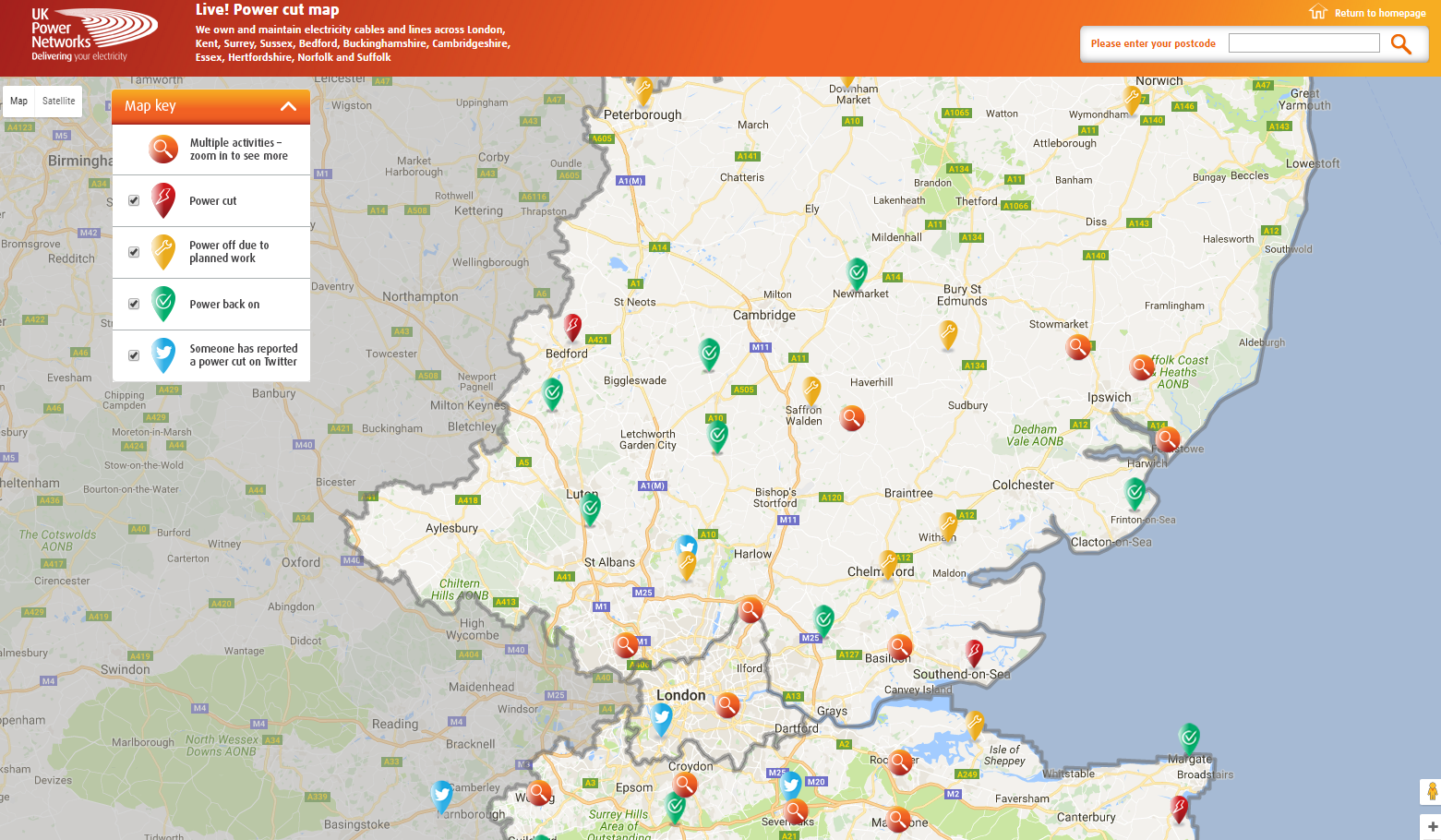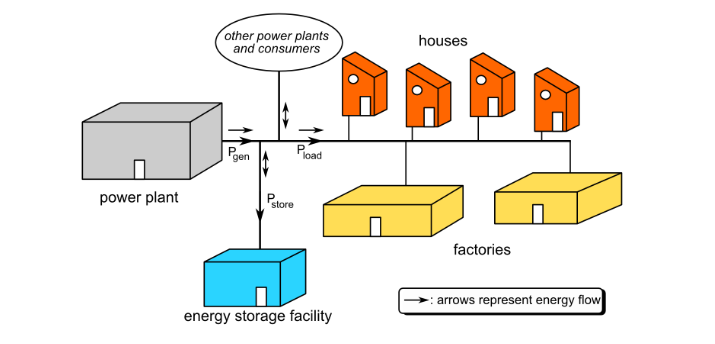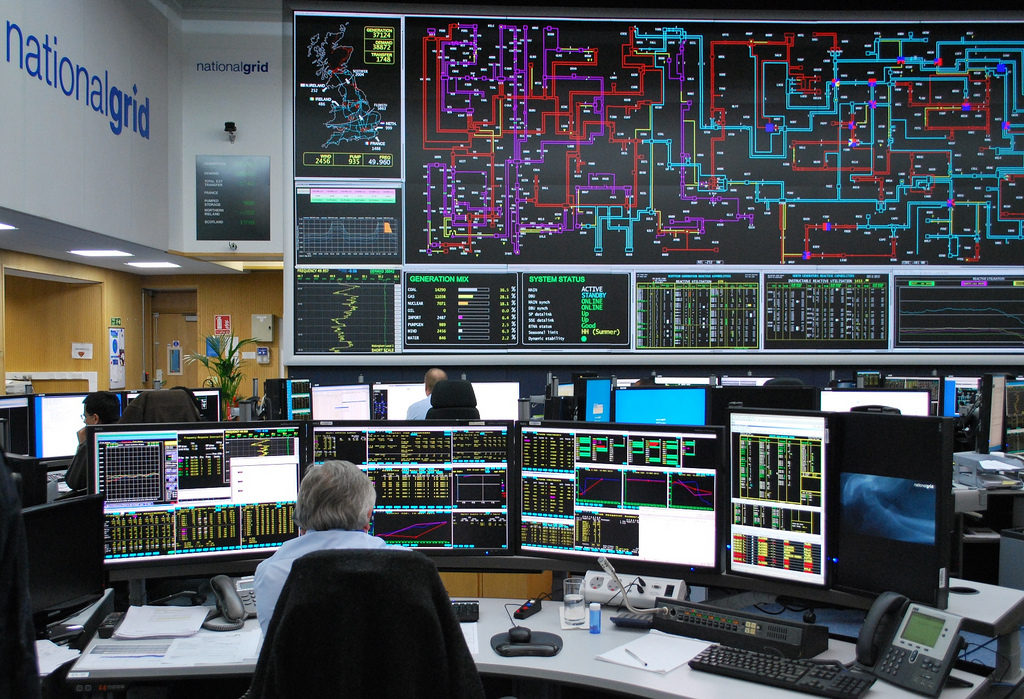For our next few blog posts, we’re going to be discussing energy storage solutions; specifically battery storage. Before we take an in depth look at what battery storage is and how it may benefit your business and it’s energy security, it’s important to look at why it’s necessary by starting at the beginning and discussing the national grid.
Whether you’re at home or at work, whenever you turn on a switch or plug an electric item into the mains, in doing so you’re relying on electricity flowing through the very high-voltage transmission network. It’s only really when the lights suddenly flicker off in a power cut, that we realise we take the electricity provided to us for granted! It’s at this point businesses falter if they rely on the national grid for their full energy supply, with no back up power source or generator which can mean their productivity halts for the period of time the power failure lasts.
There’s a number of reasons blackouts occur; damage to transmission lines which carry the energy, an overloading of the electricity mains, a short circuit in the system, faults at the power station- the list goes on. These situations occur often, despite the National Grid working tirelessly to prevent them. This screenshot taken at the time of writing this blog post from UK Power Networks shows that power cuts throughout the country are quite frequent.

After electricity is generated, it enters the National Grid and from here, it’s their daily job to balance the supply and demand. ‘Demand forecasting’ is the term given to the grid planning ahead; making sure there is enough backup power which could cover deficiencies of power for whatever reason. In the ‘grid’ there’s power from multiple sources; power stations, wind farms, solar panels etc. so, for example, if the area in which a wind farm is located in is suffering from high winds, the farm will shut their turbines down for their own protection. Since this will consequently mean there is less power than expected entering the grid, there’s a need for backup generators to be used to balance the system and ensure there’s enough power for consumers. It can of course, work in the opposite way too; where the National Grid contact some suppliers and ask them to stop generating. One example their website gives dates back to 2012, when they requested some wind farms in Scotland stop generating for a few days as high winds were affecting the transmission network. Due to the New Year Bank Holidays, there was a lower demand for energy and so the surplus energy wasn’t needed.
The increasing share of renewables and distributed generation leads to a greater need for flexibility; they can’t always be as reliable as a power station which the amount of power generated is usually known, there are more variants that can affect the amount of energy generated; e.g. weather conditions.
There are a number of energy storage technologies; lithium-ion, other solid and flow batteries. Out of these options, with reference to their technology maturity, storage duration, energy density and cost, it is the lithium-ion batteries which stand out as the most mature and available solution. Their relatively low price, technological simplicity, high energy efficiency and density plus their high modularity/ scalability, all make the lithium-ion batteries the most promising technology in the area right now.

With regards to the National Grid, they have an obligation to keep the frequency +/- 1% of 50Hz; sometimes this means they need in place backup resources which can act fast. It means that a business’ battery on their property can earn back money by being part of this reserve. If there’s a sudden loss within the system, the National Grid can call upon these Short Term Operating Reserves (STOR)- currently, the STORs represent about 2GW of reserve energy. As a customer, you could expect to earn from £10K to £25K per MW of capacity p.a. The battery can be charged overnight when energy prices are cheaper, and then be ready for the next day; working for both your business and earning you money from the National Grid!
Make sure you follow us on social media (Twitter) (LinkedIn) so you can be kept up to date on our battery storage series of blogs; what it is, if it can benefit your business, the types of batteries available and more! If you’re interested would like to talk to one of our expert energy advisors, they are always on hand for you to talk to- and would love to hear from you!

